Standpipe & Observation Tower: A Public Works Administration Project
Introduction
Author-Uploaded Audio
Listen to a narration of this entry's description by Allegheny County Park Rangers User.
Text-to-speech Audio
Sitting atop one of the highest elevations in North Park is the North Park Water Supply System Standpipe, frequently referred to as the Observation Tower. The Standpipe was constructed between 1936-1937 to help store and supply water to North Park. The 81-foot-high tank could hold up to 300,000 gallons of water and was financed in part by a New Deal program called the Public Works Administration (PWA). Ornate terrazzo tiles were installed on the top floor, with a large dome overhead painted to depict the night sky. The Standpipe was part of PWA project PA1422, which also provided funding for the Filtration Plant above Lake Marshall. There is currently no public access to the Observation Deck due to safety concerns. In March 2022 Allegheny County announced that work was progressing on the Observation Tower, with support from the Allegheny County Parks Foundation and the Babcock Charitable Trust.
Images
View of Standpipe construction underway on October 5, 1936
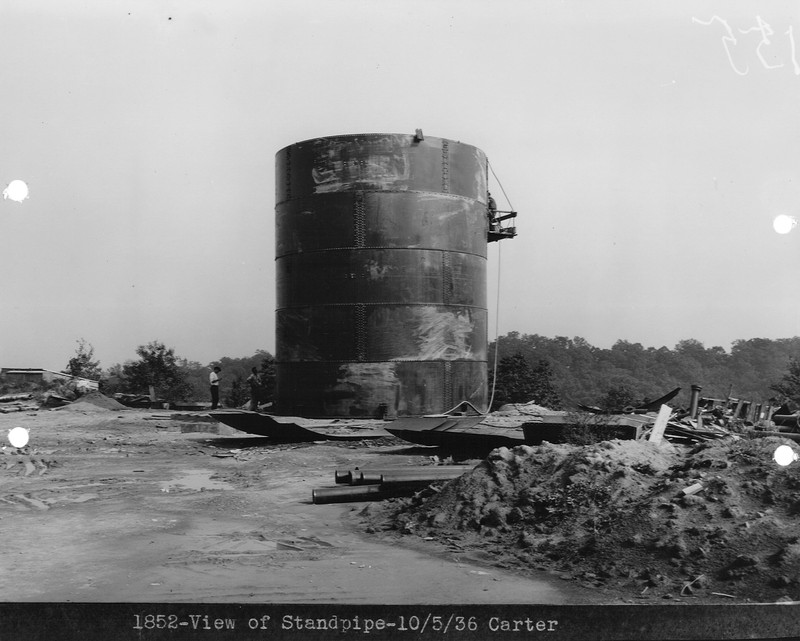
Standpipe construction progress on November 6, 1936
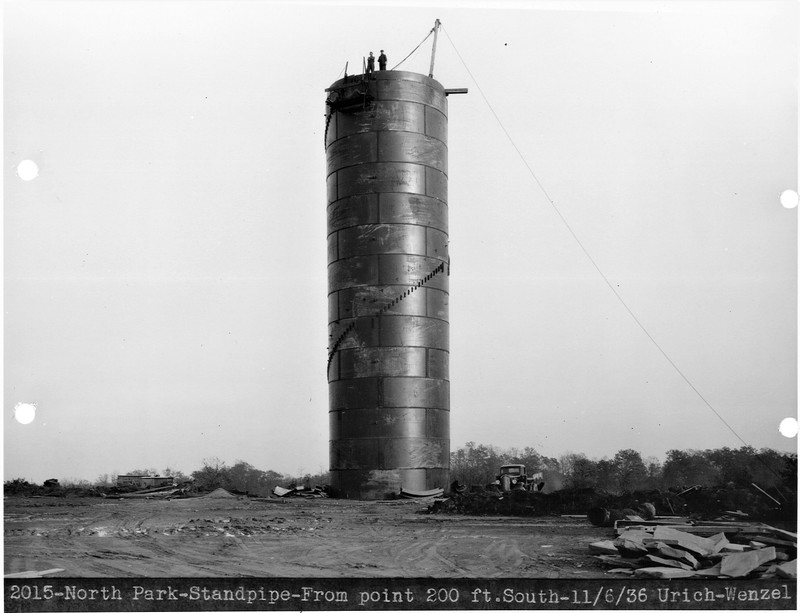
Standpipe construction progress on April 23, 1937

Standpipe construction progress from North Ridge Drive on June 4, 1937
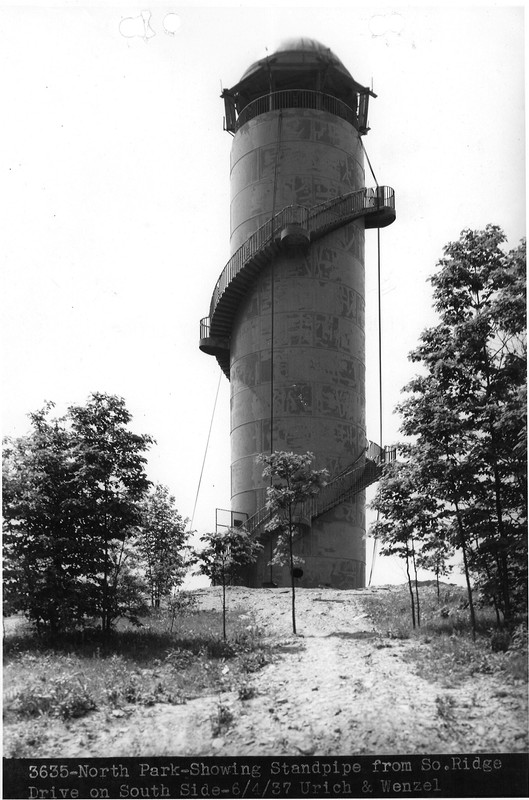
Name Plate on Standpipe, taken on August 2, 2016
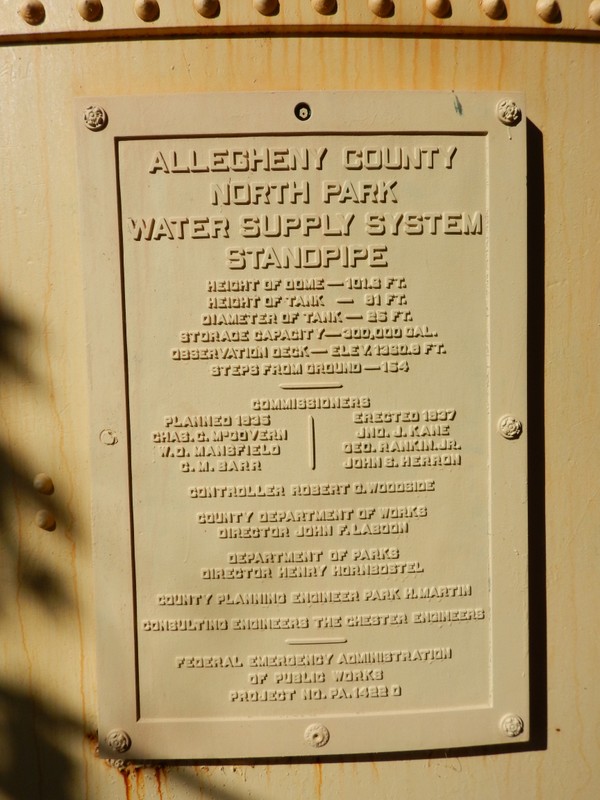
View Towards Downtown Pittsburgh from Standpipe
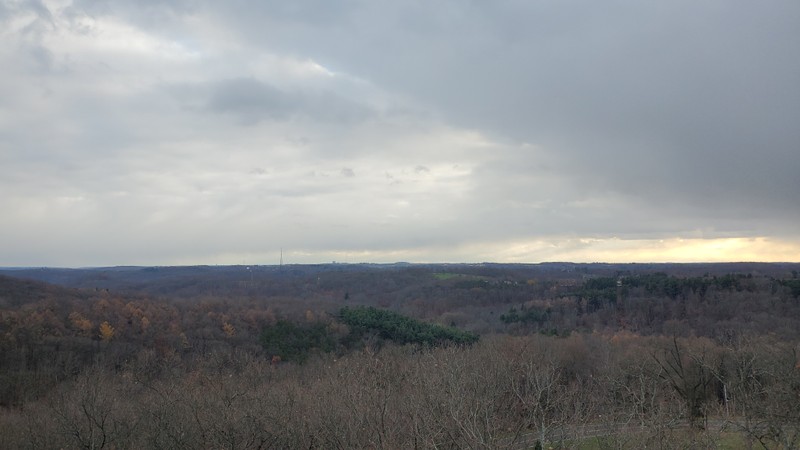
Tile floor design showing the Cancer Zodiac Sign
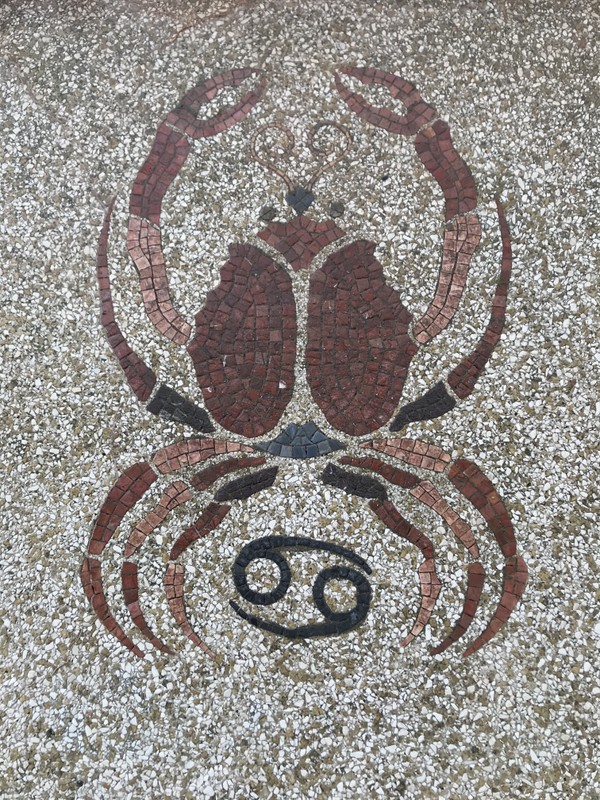
Tile floor design showing the Capricorn Zodiac Sign
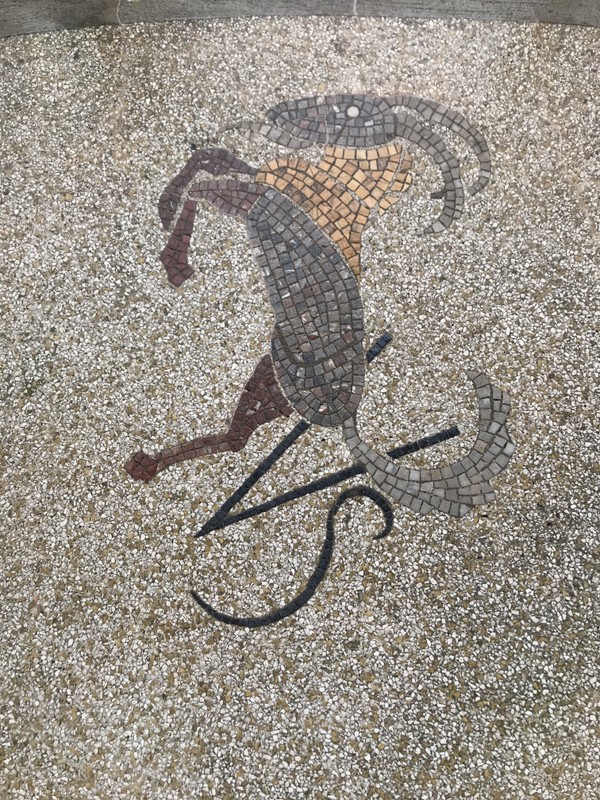
Tile floor design showing the Leo Zodiac Sign
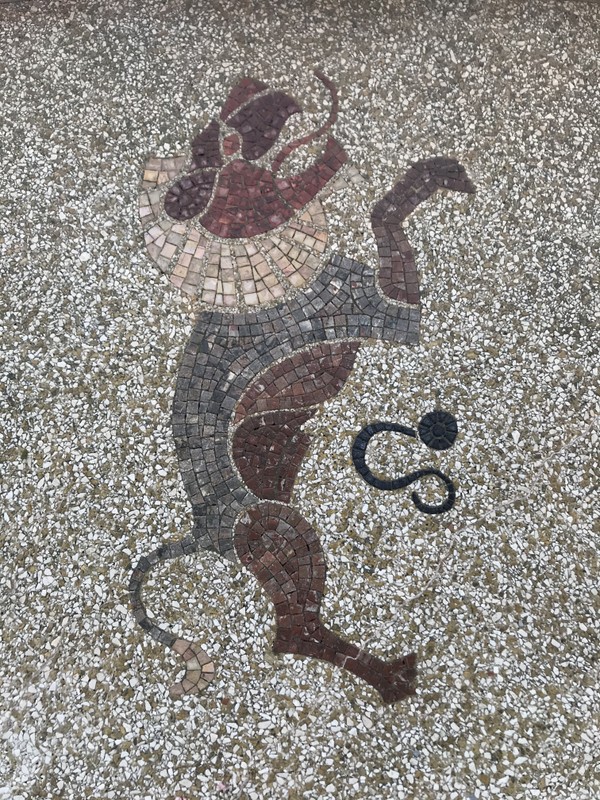
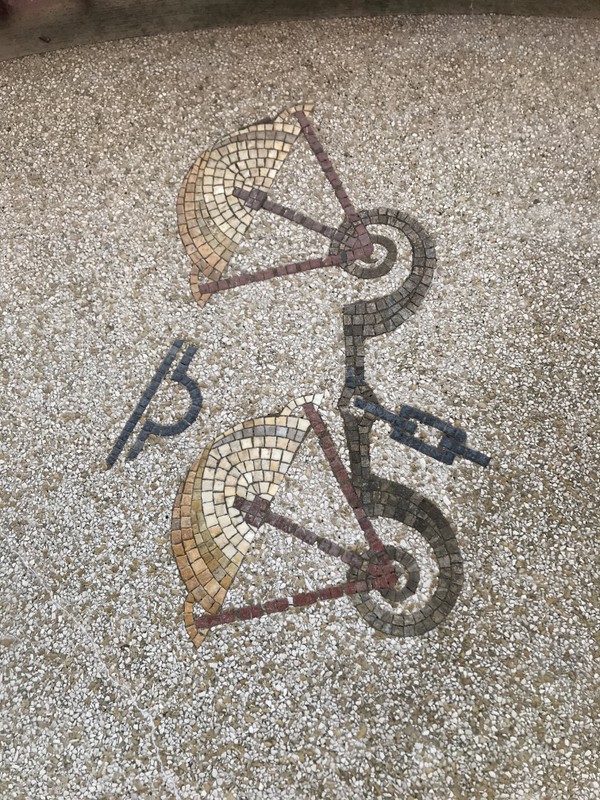
Tile floor design showing the Pisces Zodiac Sign
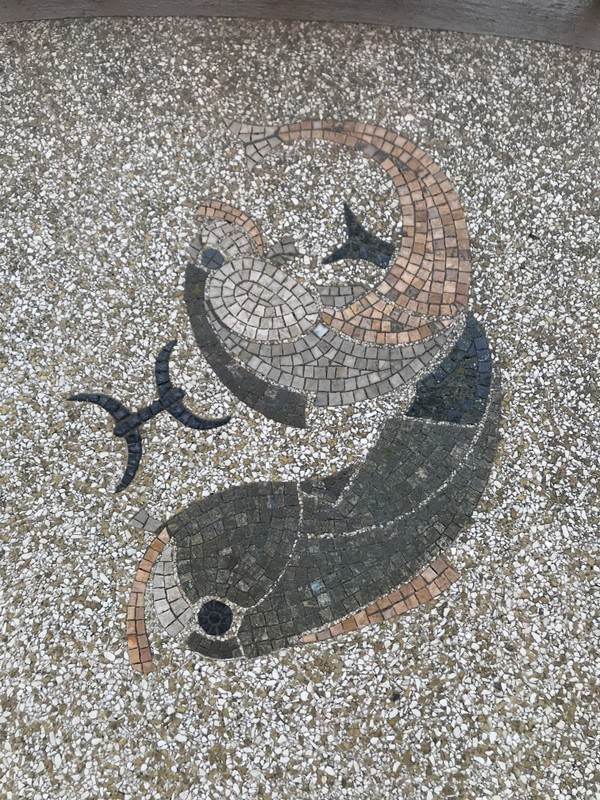
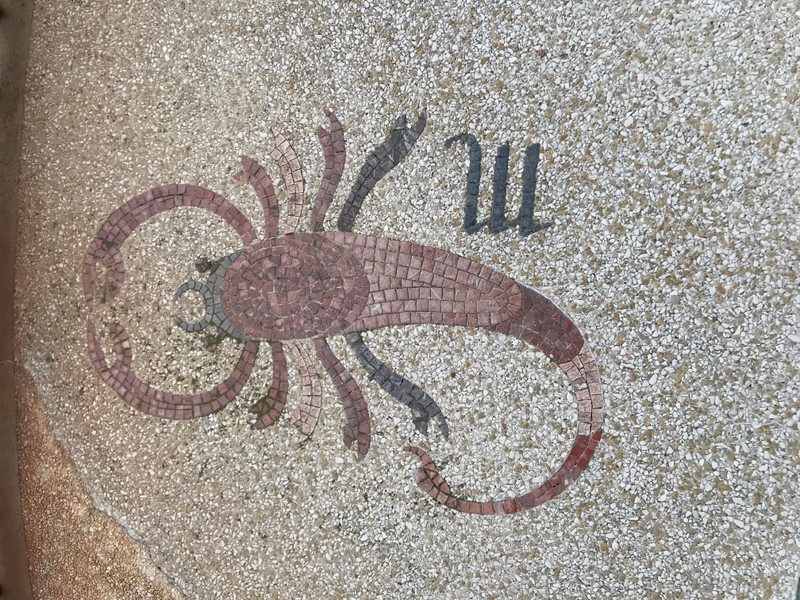
Backstory and Context
Author-Uploaded Audio
Listen to a narration of this entry's description by Allegheny County Park Rangers User.
Text-to-speech Audio
The Standpipe was designed as part of an ambitious plan to provide water for park use and protection. The plan was advanced greatly by the dam built along North Fork Pine Creek, above the intersection of Pearce Mill and McKinney Roads. The dam created Lake Marshall, constructed between 1933-1935 through the shared labor of the Civilian Conservation Corps (CCC), Civil Works Administration (CWA), and the Allegheny County Parks Department.
Once Lake Marshall was completed the next phase of water service improvements could begin. “Financed in part with funds provided by the Federal Administration of Public Works,” the project included a Filtration Plant on McKinney Road and a Standpipe reservoir on North Ridge Drive.1 Unlike the CCC and CWA, where the focus was on creating jobs for workers, the Public Works Administration (PWA) provided grants or loans so that local governments could hire private contractors to complete projects that were in the public’s interest. Costs were shared between the federal and local government, and the local government had control over what projects they wanted to do and which contractors to select.
Initial drawings for the Standpipe and Observation Deck were drawn by the Pittsburgh-based engineering firm of Chester, Laboon, Campbell, Davis, & Bankson. The drawings show that the terrazzo floor with signs of the zodiac and the decorative railing were all original to the structure. Their plans were approved by the County’s Planning Engineer, Planning Commission Chairman, Director of Parks & Aviation, and the County Commissioners by November 15, 1935. Bids were accepted for the work up until noon on December 24th of that year. An Erection Diagram detailing the construction plans was created by the Pittsburgh-Des Moines Steel Company and was approved by the County and Chester Engineers on July 30, 1936. Pittsburgh-Des Moines Steel Co. is also listed as the General Contractor on the April 1937 plan for the terrazzo floor, which was sub-contracted to the Star Marble & Tile Company located on the Boulevard of the Allies in Pittsburgh’s Bluff neighborhood. Pittsburgh-Des Moines Steel Company would later serve as a steel fabricators and erectors of the Gateway Arch in St. Louis, Missouri.
North Park’s Standpipe, Boathouse, and Lake were featured in Public Buildings: A Survey Of Architecture Of Projects Constructed By Federal And Other Governmental Bodies Between The Years 1933 And 1939 With The Assistance Of The Public Works Administration, which describes the Standpipe as “constructed entirely of steel and as it stands on a height of ground in a park of great natural beauty, considerable thought was given to its design. Its flat roof was turned into an observation platform reached by an exterior spiral stairway and covered by a domed roof, the underside of which is painted blue and decorated with constellations of stars. The entire project was completed in November 1937 at a construction cost of $177,064 and a project cost of $193,546. The approximate cost of the standpipe was $23,000.”2
Hundreds of visitors visited the Standpipe when it opened to the public on August 7, 1937. The Observation Deck, 2,100 feet above sea level, was open from 8am to 11pm daily, and could only be reached by braving the 154 steps up the winding Black staircase to the top. Though the newspaper articles from that first year mention that a guard was on constant duty at the Standpipe, two decades later the eight red lights on the very top that would warn aircrafts “had been broken by boys, who’ll climb to any heights these days, it seems, to break things.”3 Newspaper reports indicate that the Observation Deck was only open during the fall foliage season in the 1970s and 1980s. The view from the top can still be enjoyed by watching Rick Sebak’s documentary North Park vs. South Park, which premiered in 2011 on WQED.
Sources
Footnotes
1. “Sealed Proposals,” Pittsburgh Post-Gazette, December 11, 1935.
2. C.W. Short, and R. Stanley-Brown, Public Buildings: A Survey Of Architecture Of Projects Constructed By Federal And Other Governmental Bodies Between The Years 1933 And 1939 With The Assistance Of The Public Works Administration (Washington, D.C.: Government Printing Office, 1939), 477.
3. “New Lamps for Old,” Pittsburgh Post-Gazette, November 25, 1957.
Additional Sources
“Fabricating the Steel,” Gateway Arch, National Park Service, last update on April 10, 2015, https://www.nps.gov/jeff/planyourvisit/fabricating-the-steel.ht.
“High Tower Opens to Park Visitors,” Pittsburgh Post-Gazette, August 6, 1937.
North Park vs. South Park, hosted by Rick Sebak (WQED, 2011), 40:26 to 42:36. https://www.wqed.org/tv/watch/its-pittsburgh/north-park-vs-south-park.
Allegheny County Photographers: Carter, 1852-View of Standpipe, 10/5/1936, photograph, 8.25x10”, Allegheny County Parks Department Records.
Allegheny County Photographers: Urich-Wenzel, 2015-North Park-Standpipe-From point 200 ft.South, 11/6/1936, photograph, 8.25x10”, Allegheny County Parks Department Records.
Allegheny County Photographers: Wenzel & Hefelfinger, 3099-North Park-Showing Stand-Pipe, 4/23/1937, photograph, 8.25x10”, Allegheny County Parks Department Records.
Allegheny County Photographers: Urich & Wenzel, 3635-North Park-Showing Standpipe from So.Ridge Drive on South Side, 6/4/1937, photograph, 8.25x10”, Allegheny County Parks Department Records.
Allegheny County Park Rangers, Standpipe Name Plate, August 2, 2016, Allegheny County Parks Department Files.
Allegheny County Park Ranger McManus, View Towards Downtown from Standpipe, November 17, 2020, Allegheny County Parks Department Files.
Allegheny County Park Rangers, April 1, 2020.
Allegheny County Park Rangers, April 1, 2020.
Allegheny County Park Rangers, April 1, 2020.
Allegheny County Park Rangers, April 1, 2020.
Allegheny County Park Rangers, April 1, 2020.
